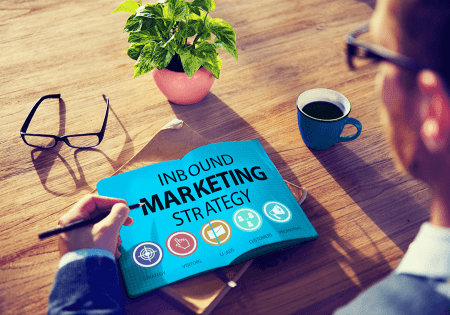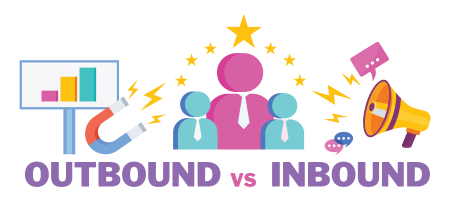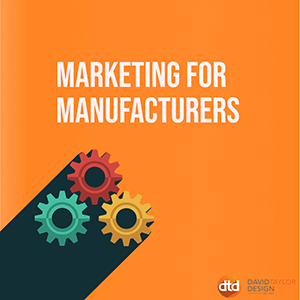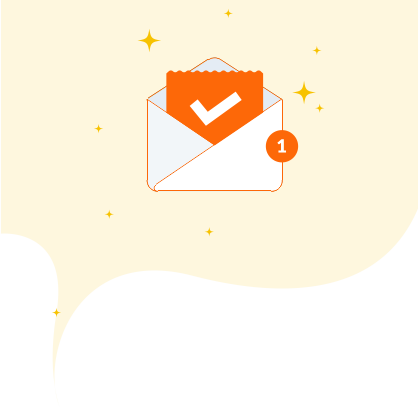
Did you know that 72% of marketers say it is a challenge to manage content strategically? As a business, it is crucial to be strategic with every marketing method you use. Because there are various techniques out there, businesses may not know which will work best for them. Common terms thrown around in the marketing world are inbound and outbound marketing.
Should you create strategies for these methods? What are the differences between them? Read on to learn all about inbound vs. outbound marketing.
What is Outbound Marketing?
Outbound marketing, often referred to as ‘push’ or ‘interruption’ marketing, is the traditional form of marketing that has been around for decades. This strategy involves businesses initiating conversations with potential customers through various channels, both traditional and digital.
The Mechanics of Outbound Marketing
In outbound marketing, businesses actively reach out to consumers using various methods, such as telemarketing, TV commercials, billboards, radio ads, and even email campaigns. These methods are designed to cast a wide net, targeting a broad audience rather than a specific niche.
The Pros and Cons
Pros:
- Quick Reach: Allows for immediate exposure and quick results.
- Brand Awareness: Effective for building brand recognition on a large scale.
- Control: Businesses have more control over the timing and scale of their campaigns.
Cons:
- Cost: Often pricier than inbound methods.
- Lower Engagement: May result in lower customer engagement rates.
- Intrusive: Can be perceived as disruptive or annoying by the audience.
The Right Way to Do Outbound Marketing
While outbound marketing is often criticized for being intrusive, when executed correctly, it can yield significant results. Tailoring your message to resonate with your target audience and choosing the right channels can make all the difference.
What is Inbound Marketing?
In contrast to outbound marketing, inbound marketing is a relatively new player in the marketing arena, having emerged around 2006. This approach focuses on attracting customers organically rather than pursuing them.
The Essence of Inbound Marketing
Inbound marketing is all about creating valuable content and experiences tailored to your audience. It’s a more ethical and customer-centric approach that relies on earning people’s interest rather than buying it. Marketers using this strategy typically employ SEO, content marketing, and social media to attract prospects.
The Pros and Cons
Pros:
- Cost-Effective: Generally less expensive than outbound methods.
- Higher Engagement: Tends to result in more meaningful customer interactions.
- Builds Trust: Content value can establish authority and trust over time.
Cons:
- Time-Consuming: Requires a long-term commitment for best results.
- Complexity: Demands a well-thought-out strategy and constant optimization.
- Slower Results: May not deliver quick wins in terms of customer acquisition.
Maximizing Inbound Marketing
Inbound marketing is not a “set it and forget it” strategy. It requires ongoing effort, from optimizing your website for search engines to creating high-quality, relevant content that answers your audience’s questions.
Inbound vs. Outbound Marketing: A Complete Guide
When it comes to inbound vs. outbound marketing, the differences are more than just buzzwords. Both strategies aim to generate leads and increase sales, but they go about it in fundamentally different ways. Let’s delve into the key distinctions that set them apart.
Pull vs. Push
Inbound Marketing: The Art of Pulling Customers In
In inbound marketing, the focus is on pulling customers toward your brand by creating valuable content that addresses their needs and questions. This approach requires a profound understanding of your target audience, as well as a commitment to producing high-quality content that solves their problems. The idea is to become a trusted resource, so when the time comes for them to make a purchase, your brand is top of mind.
Inbound marketing is about building brand awareness and interest through content. It’s a long-term strategy that can be more cost-effective eventually. The content you create has staying power, continually attracting new prospects as long as it remains relevant and accessible.
Outbound Marketing: The Push Strategy
Contrary to inbound marketing, outbound marketing involves pushing your message out to a broad audience, whether they’ve asked for it or not. This can include traditional advertising channels like TV, radio, and billboards, as well as digital methods like email blasts and social media ads.
While this approach can yield faster results, it’s often pricier and less targeted. HubSpot notes that outbound marketing techniques are becoming less effective over time due to the increasing ability of consumers to block out interruptions.
Specific vs. Generic
Inbound: Tailored to Your Audience
Inbound marketing thrives on specificity. Businesses analyze data to understand what their target audience is searching for, and then create educational content around those needs. This could be in the form of blog posts, social media updates, or newsletters, all of which are optimized for a specific audience.
The specificity of inbound marketing increases engagement and improves conversion rates. You’re not just reaching more people; you’re reaching the right people.
Outbound: A One-Size-Fits-All Approach
Outbound marketing, on the other hand, is regularly more generic. The messages are designed to reach as many people as possible and are therefore less personalized. While there is still some level of targeting—like placing a billboard in a strategic location—the approach is not as refined as inbound marketing.
Permissive vs. Interruptive
Inbound: The Permission-Based Approach
Inbound marketing is inherently permissive. When users search for information or solutions online, they are giving search engines permission to show them relevant content. This extends to following brands on social media, where users are essentially saying, “Yes, show me what you have to offer.”
Outbound: The Interruptive Nature
Outbound marketing is frequently interruptive, inserting itself into people’s lives without their explicit permission. Whether it’s a TV commercial breaking into their favorite show or a pop-up ad on a website, outbound marketing demands attention rather than earning it.
According to Ahrefs, this interruptive nature can be a downside, as people are increasingly using tools to block out interruptions. However, it’s worth noting that outbound marketing can still be effective when done right, especially when combined with inbound strategies.
Combining the Best of Both Worlds
Interestingly, the most successful companies typically use a mix of both inbound and outbound marketing strategies. For instance, you can capture leads using inbound marketing techniques and then follow up using outbound methods. This creates a more holistic approach to reaching and converting potential customers.
Understanding the nuances between inbound and outbound marketing can help you create a more effective, targeted marketing strategy. While both have their pros and cons, the key is to find the right balance that works for your business.
Using Outbound Marketing
When it comes to business marketing, data-driven strategies are crucial. While outbound marketing may have a reputation for lower click-through rates, it’s far from ineffective. In fact, outbound marketing serves as a powerful tool for raising brand awareness, especially for businesses that are either new or launching a new product or service.
The Right Time for Outbound Marketing
Outbound marketing shines in scenarios where you need quick results. For startups without a following or established businesses introducing a new offering, outbound marketing can be a game-changer. It’s a faster way to get your message in front of potential customers, without waiting for your content to rank or for a following to build.
The Role of Marketing Agencies
Creating effective outbound ads is no small feat, but partnering with an experienced marketing agency can make all the difference. Even with generic outbound strategies, a skilled agency can tailor your campaign to reach the right audience.
Quick Results, But at a Cost
It’s important to note that outbound marketing often requires ongoing investment. Unlike inbound marketing, the traffic and engagement you gain from outbound methods typically cease when you stop funding the ads.
Using Inbound Marketing
Inbound marketing is a marathon, not a sprint. Particularly for startups and less competitive industries, don’t expect immediate results. The process of creating high-quality content, getting it indexed by search engines, and eventually ranking takes time.
The Long-Term Benefits of Inbound Marketing
The beauty of inbound marketing lies in its sustainability. Once you’ve made the initial investment in creating quality content, you’ll continue to reap the benefits. Organic traffic, unlike paid traffic from outbound methods, doesn’t dry up when you stop investing money.
The Importance of Strategy
Inbound marketing is not about churning out content for the sake of it. A well-thought-out strategy is essential for success. This should include:
- Target Audience Research: Know who you’re speaking to.
- Competitive Analysis: Understand your market landscape.
- Social Media Content: Engage with your audience where they spend their time.
- Blog Content: Provide value and establish authority.
- Promotional Content: Occasionally, it’s okay to toot your own horn.
- Link Building: Boost your site’s authority and rankings.
Without these elements, your inbound marketing efforts are likely to fall flat.
Balancing Inbound and Outbound Marketing
While inbound marketing is excellent for long-term growth, outbound marketing can fill in the gaps when you need quicker results. Both strategies require upfront investment, but they pay off in different ways and at different times. The key is to use both strategically to create a well-rounded marketing plan.
How to Create an Outbound Marketing Strategy
Crafting a robust outbound marketing strategy is crucial for any business aiming for success. Without a well-defined strategy, your outbound marketing efforts may not yield the desired results. Let’s delve into the essential steps to develop an effective outbound marketing strategy that aligns with your business goals.
Understand Your Audience: More Than Just Numbers
While outbound marketing is often considered more generic, understanding your audience is still vital. It’s not just about casting a wide net; it’s about knowing who your qualified leads are. The first step in any marketing strategy is to understand your audience. This involves segmenting your audience based on various factors like age, location, and interests to ensure that your message reaches the right people.
Set Measurable Goals: Beyond Just “More Leads”
Before diving into the nitty-gritty of your outbound marketing strategy, set clear, measurable goals. Whether it’s generating a specific number of leads, increasing website traffic, or boosting sales for a new product, your goals should be specific and trackable. Having well-defined goals allows you to measure your campaign’s success and make data-driven decisions.
Data-Driven Decisions: The Backbone of Your Strategy
Your outbound marketing strategy should be built around data. This involves analyzing customer behavior, market trends, and competitor strategies. Using data-driven decisions can significantly improve the effectiveness of your campaigns. This ensures that you’re not just shooting in the dark, but are making informed decisions that will likely yield better results.
Create Quality Content: Your Brand’s Voice
The ultimate goal of any outbound marketing technique is to direct potential customers back to your website, where they can find more information and hopefully convert. Quality content is crucial in this customer journey. Whether it’s a landing page, a blog post, or an eBook, make sure that what you offer is valuable and aligns with your brand’s voice.
Optimize and Iterate: The Never-Ending Process
The key to a successful outbound marketing strategy is continuous optimization. Analyze the performance metrics during and after each campaign. Learn from your successes and failures, and apply these insights to future campaigns. The strategy should be dynamic, adapting to new data and market trends.
In the world of inbound vs. outbound marketing, having a well-crafted outbound strategy is essential for reaching a broader audience quickly. By understanding your audience, setting measurable goals, making data-driven decisions, creating quality content, and continually optimizing, you can make your outbound marketing efforts more effective and aligned with your business objectives.
How to Create an Inbound Marketing Strategy
Crafting an effective inbound marketing strategy is crucial for businesses looking to build meaningful relationships with their customers. While it shares similarities with outbound marketing, inbound marketing focuses on attracting customers through valuable and relevant content. This guide will walk you through the essential steps to create a robust inbound marketing strategy.
Create a Buyer Persona
Understanding your target audience is the cornerstone of any marketing strategy, inbound or outbound. However, inbound marketing requires a more nuanced approach.
To get started, create buyer personas. These are detailed profiles that represent your ideal customers, helping you tailor your content and campaigns to meet their specific needs and pain points. Buyer personas are not just useful for inbound marketing; they’re also invaluable for outbound strategies.
Why Buyer Personas are Crucial
Having a well-defined buyer persona can significantly impact your content creation, lead generation, and customer acquisition. It ensures that your marketing efforts are aligned with the needs and behaviors of your target audience.
Conduct Keyword Research
Once you have your buyer personas in place, the next step is to understand how they search for information related to your business. Conduct keyword research to identify terms with high search volume and low competition. These are the keywords you’ll want to incorporate into your content to attract your target audience.
Tools for Keyword Research
There are various tools available for keyword research, such as Google Keyword Planner and SEMrush. These tools provide insights into keyword difficulty, search volume, and even give you keyword suggestions.
Define Your Goals and KPIs
Setting clear objectives is vital for the success of your inbound marketing strategy. Common goals include increasing the number of unique website visitors, generating more inbound leads, and identifying key traffic sources. Your buyer personas can guide you in setting these goals, ensuring they align with your target audience’s needs.
Importance of Measuring KPIs
Key Performance Indicators (KPIs) help you measure the effectiveness of your strategy. Regularly tracking these metrics will provide insights into what’s working and what needs improvement, allowing for data-driven decision-making.
Collaborate with Inbound Marketing Experts
Inbound marketing is a long-term commitment that requires specialized skills and expertise. Even if you have an in-house team, consider partnering with professional digital marketers for a fresh perspective. This collaboration can bring new ideas and efficiencies into your strategy.
Benefits of Outsourcing
Outsourcing certain tasks can free up your in-house team to focus on other essential aspects of your business. It also brings in external expertise that can provide a new angle to your existing strategies.
Analyze and Iterate
Whether you choose to work with an in-house or outsourced team, ongoing analysis is crucial. Regularly review your KPIs and make data-driven adjustments to your strategy. This iterative process ensures that your inbound marketing efforts remain effective and aligned with your business goals.
By following these steps and guidelines, you’ll be well on your way to creating a successful inbound marketing strategy that complements your outbound efforts. Remember, the key to effective inbound vs. outbound marketing lies in understanding your audience and delivering value through tailored content and interactions.
Popular Types of Digital Content Marketing
In the ever-evolving landscape of digital marketing, businesses have a plethora of content types at their disposal. While these types can be leveraged for both inbound and outbound marketing, they are particularly effective for inbound strategies. Let’s delve into some of the most popular types of digital content marketing and how they can elevate your inbound vs. outbound marketing efforts.
Search Engine Optimization (SEO)
SEO is more than just a buzzword; it’s a crucial relationship builder between businesses and consumers. When people have questions or are considering a purchase, they often turn to search engines. If your content ranks high enough, it’s your business they’ll find first.
Why SEO Matters
SEO is not just about visibility; it’s about credibility. When your content appears on the first page of search results, it increases your visibility and adds a layer of trust. You can optimize your content through Google Ads, PPC campaigns, and targeted SEO keyword research.
Blog Posts
Blogs are not just a nice-to-have; they’re a must-have for any business, regardless of the industry. A well-crafted blog post can significantly improve your SEO, driving more organic traffic to your website.
The ROI of Blogging
While creating quality blog content may require an investment, the returns are substantial. Blogs build trust among your audience and establish your brand as an authority in your field. Creating content like this is both cost-effective and impactful, making it a win-win for businesses.
Landing Pages
Landing pages serve as the digital storefront of your business. They are designed to capture attention and convert visitors into leads or customers. Therefore, your landing page and overall website design should be both aesthetically pleasing and user-friendly.
Landing Page Essentials
To optimize your landing page, consider adding multimedia elements like videos or images. These can break up text and make the page more engaging, thereby increasing conversion rates.
Social Media
If there’s one piece of advice every marketing professional will give, it’s this: get on social media. Regardless of your target audience’s age, they are likely to be on some social media platform.
The Power of Social Media
As technology continues to advance, the role of social media in business is becoming increasingly significant. It allows you to build your brand, foster customer loyalty, and engage directly with your audience. By not being present on these platforms, you’re missing out on a wealth of opportunities to connect and convert.
Can a Business Use Inbound and Outbound Marketing Together?
The debate around inbound vs. outbound marketing often leads to a question: Can a business effectively use both? The answer is a resounding yes! A blended approach can offer the best of both worlds, allowing you to cast a wider net while still honing in on your target audience. Here’s how you can integrate these two strategies for a more comprehensive marketing campaign.
The Synergy of Inbound and Outbound Marketing
While inbound marketing focuses on attracting a specific audience through valuable content, outbound marketing aims to reach as many people as possible. When used together, these strategies can complement each other beautifully. For instance, you can use outbound tactics like sponsored ads to amplify the reach of your inbound content.
Why a Combined Approach Works
A hybrid strategy allows you to make genuine connections with your target audience while also maximizing your reach. It’s like having your cake and eating it too, in the marketing world.
Steps to Create an Integrated Inbound/Outbound Campaign
Creating a combined inbound and outbound marketing campaign involves a few key steps:
- Create a Buyer Persona: Understand who you’re targeting. This will guide both your inbound and outbound strategies.
- Develop Targeted Content: Build content that resonates with your buyer persona. This could be blog posts, videos, or infographics.
- Publish Content on Your Website: Once the content is ready, upload it to a specific page on your website where it can be easily accessed.
- Design Correlated Ads: Create ads that are in line with the content you’ve developed. This ensures a cohesive message across platforms.
- Launch Sponsored Ads: Finally, set up sponsored ads with a specific targeting amount to boost your content’s visibility.
By following these steps, you can create a marketing strategy that leverages the strengths of both inbound and outbound tactics.
Inbound vs. Outbound Marketing: Which Is Better?
The debate between inbound vs. outbound marketing doesn’t have a one-size-fits-all answer. Both have their merits, and the most effective strategy often involves a blend of the two. By integrating inbound and outbound marketing tactics, you can build a robust strategy that reaches a broad audience and engages and converts your target customers.
Why Choose One When You Can Have Both?
In today’s dynamic marketing landscape, limiting yourself to just one approach could mean missing out on valuable opportunities. Whether you’re looking to build brand awareness, drive website traffic, or increase sales, a combined approach allows you to tailor your efforts to meet those specific goals.
Ready to Elevate Your Marketing Strategy?
If you’re ready to take your marketing to the next level, we’re here to help. At David Taylor Digital, we offer a comprehensive suite of services that can be customized to your unique needs. From SEO and content creation to PPC campaigns and social media management, we’ve got you covered.
Contact us today to learn how we can help you create a balanced inbound vs. outbound marketing strategy that drives results.







